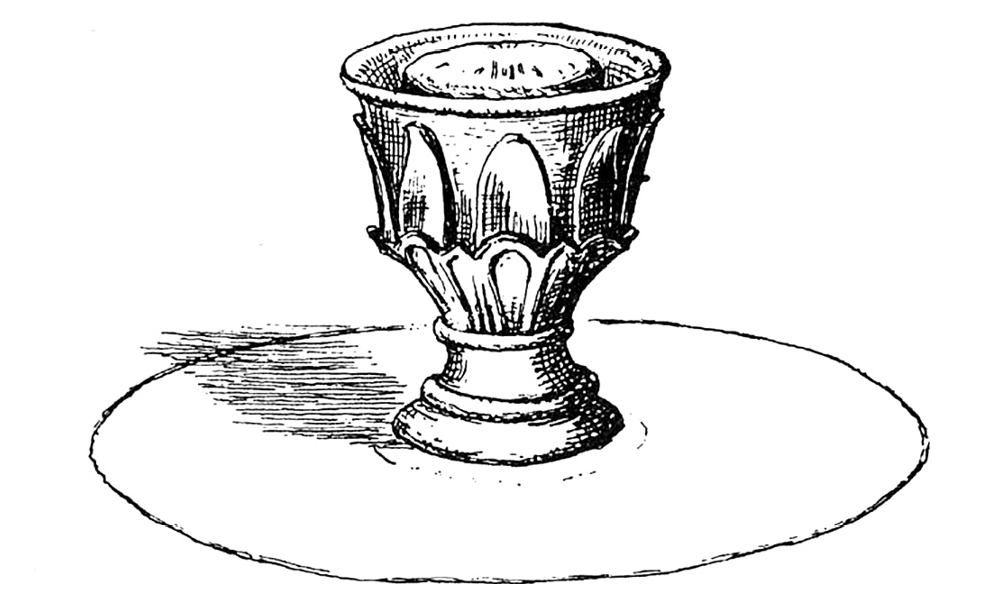Issue 248, Summer 2024
Preface
The author of this text was a familiar figure at the National Library of Sweden in Stockholm’s Humlegården park. Almost every day for more than three decades he could be spotted in the serene reading room, absorbed in his studies and in reverie. It was said that he was occupied with an uncommonly comprehensive project, a work that—as he once disclosed in confidence—would reveal a chain of connections until then overlooked.
Even after the thorough investigations that have followed upon his death, the work in question has yet to be located. Among his effects, however, is a sheaf of papers on which is written “The Ways of Paradise: Notes.” Which is to say, all that remains of his great work is its critical apparatus.
The manuscript is typewritten on white A4 paper. It consists of 122 loose sheets, collected in said sheaf. Neither the pages nor the notes are numbered. In the edition from which this selection is taken, I have, however, numbered the notes following their order in the manuscript. The extent to which this order was finalized we cannot be sure; therefore other combinations cannot be ruled out. Neither can we be sure that this manuscript contains the complete critical apparatus to The Ways of Paradise or if this represents but a smaller part. Certain graphic figures were included in the original manuscript; other illustrations, notably of various artworks named in the text, I have appended myself.
As the author’s sole remaining friend and student, all that is left for me to do is publish these notes, in the hope that they will provide a glimpse of the lost manuscript’s contours.
Stockholm, June 1987
Peter Cornell
Book I
1. Various types of fantastical tales, “contes fantastiques autour des contes originaires.” Jurgis Baltrušaitis,La quête d’Isis: Essai sur la légende d’un mythe, 1985.
2. Ibid.
3. “The center of the world,” “the heart of the world.” This concept recurs in all cultures even as their geographic and topographical situations may vary: country, cave, mountain, tower, temple, or city. These imagined places arise from fantasies of a holy land, described as follows by René Guénon: “This ‘holy land’ above all others, it is the finest of lands per the meaning of the Sanskrit word Paradesha, which among the Chaldeans took the form of Pardes, and Paradise in the Western world; in other words it refers to the ‘earthly paradise’ that constitutes the point of departure in each religious tradition.” Here was the origin, here was spoken the first, creative Word. See “Les gardiens de la Terre Sainte,” 1929, in Symboles fondamentaux de la Science sacrée, 1962.
4. Possibly in André Breton’s object Souvenir du paradis terrestre from 1953, a rugged rock, 10 x 9 cm., its title inscribed into the rock.
5. Paradise, from Old Persianpairidaeza, meaning “enclosed garden, park.”
6. On parks as places “where the city dwellers’ wild dreams stir,” see Louis Aragon,Le paysan de ParisParis Peasant), 1926.
7. Observe that he “imagines himself [sic!] to know.”
8. Cf. here Prof. Gianfranco Ravasi, for whom the term center—“paradise,” “cosmic navel”—is fundamental to descriptions of Jerusalem. The term can be read metaphorically, as a protective circle, a place of refuge, a hortus conclusus. La Gerusalemme celeste, 1983.
9. It was namely thought that mankind was created in the center of the world, in the navel of the earth, omphalos. Mircea Eliade has recounted several such myths, among them Mesopotamian and Jewish. Of course, paradise, where Adam was created from dust, lay at the center of the cosmos. And according to one Syrian tradition Adam was created in the very place where Jesus’s cross was to be raised. The same notion has been preserved in Judaism, where Midrash, one of the oldest methods of biblical exegesis, identifies Jerusalem as the site of Adam’s creation. Adam was buried in the very spot of his creation, at the center of the world, on Golgotha. Cf. Mircea Eliade, Le mythe de l’éternel retour, 1949.
11. It can, by the way, be noted that within Jerusalem are two places and—under the caliph ‘Abd al-Malik—three religions that could lay claim to the absolute center of the world. On the one hand, there is the rock that provided the foundation for Solomon’s temple, the very crown of which marked the altar of burnt offering: the same rock that was identified as the place of Muhammad’s ascent to heaven. On the other hand, there is Golgotha hill with the Holy Sepulchre, where the center of the world is still marked with a bowl containing a round rock. See Lars-Ivar Ringbom,Graltempel und Paradies, Royal Swedish Academy of Letters, History and Antiquities Records, 1951.

Omphalos in the Church of the Holy Sepulchre. After Roscher.
Drawing by Alice Roscher, in Wilhelm Heinrich Roscher’s Omphalos (1913)
14. But can one not equally assert the inverse relationship here? Paul Cézanne’s repetition of certain motifs doesn’t have to mean that he was indifferent to the motif, that the motif was merely an artifice to render the desired form. On the contrary, his constant return to the mighty Mont Sainte-Victoire could suggest that this motif harbors a dark and mysterious meaning. Behind the outline of Sainte-Victoire we can perhaps glimpse old notions about the center of the world. And via Cézanne these fantastical stories reproduce themselves in ever-widening circles around their origin; this is how Peter Handke designates a specific geological point on this very mountain as his own center point:
In my quest for unity I had discovered yet another clue, to which I felt committed, though I had no idea where, if anywhere, it might lead. In the preceding months, every time I looked at Cézanne’s paintings of his mountain, I had come across this clue, and it had become an obsession with me.
Seen from the west, where the mountain shows three prongs, it reveals its strata and folds in a geological cross section. I had read that Cézanne as a young man was friends with a geologist by the name of Marion, who in later years accompanied him on many of his expeditions in search of “motifs.” As I studied the maps and descriptions of the mountain, my thoughts began, involuntarily and inexplicably, to revolve around one and the same point: a fault between two strata of different kinds of rock. This occurs on the gently rising ridge path leading from the west to the actual crest, and it can fittingly be called a “point” because here, where one stratum penetrates most deeply into the other, it also intersects the line of the ridge. This point, which in nature cannot be discerned with the naked eye, nevertheless recurs time and again in Cézanne’s paintings, where it is indicated by a shadow line of varying length and thickness; even in the pencil sketches, the indentation is indicated by shading or at least by a delicate outline.
It was this spot more than anything else—I was about to start working—that impelled me to repeat the trip to Provence. From this new trip I expected the key; and even if my reason tried to talk me out of it, I knew that my imagination was right.
Die Lehre der Sainte-Victoire, 1984 (“The Lesson of Mont Sainte-Victoire,” translated by Ralph Manheim, 1985).




